For a person who is often seated next to a security door by plane, how to open the door smoothly in a state of emergency and with the permission of the crew should be the most talked about in the world.
The delay in the opening of aircraft doors or security doors by passengers is one of the most common confusing actions of civil aviation. After all, every time a door is opened, it will face a fine of 100,000 or even hundreds of thousands.
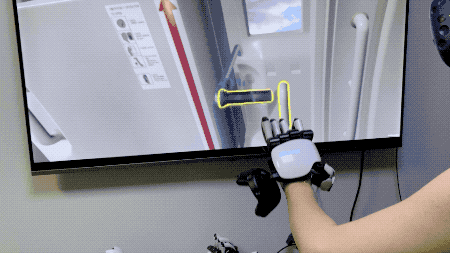
Recently through a set of VR equipment and a pair of force feedback gloves, I finally experienced how to switch the aircraft door in the virtual world, which satisfied my wish for many years.
Mechanical exoskeleton robot that can simulate “flexible touch”
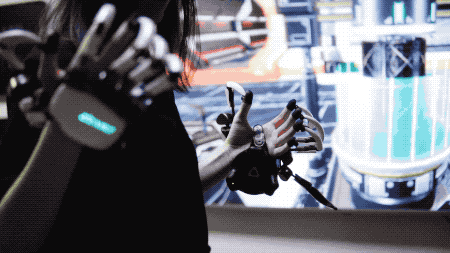
In June of this year, Dexta Robotics (hereinafter referred to as Dexta) in Shenzhen released a mechanical glove that integrates motion capture and force feedback.—Dexmo force feedback gloves.
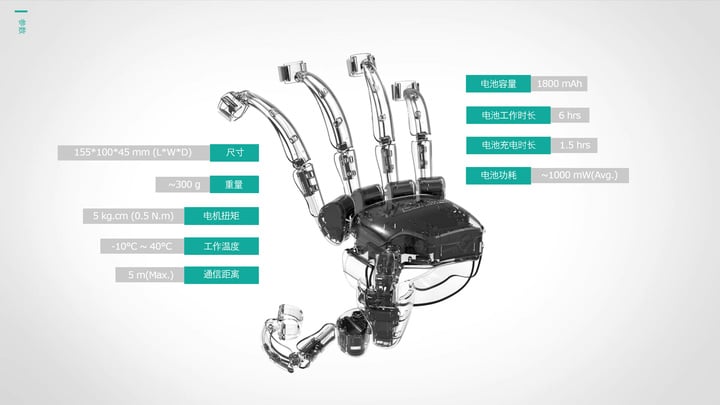
▲ Image from: Dexta Robotics
Dexmo force feedback gloves are wireless and portable devices with a single weight of only 290 grams, which combines 5 force feedback devices, 11 motion capture sensors, rechargeable batteries, and the entire control system. Use your own hands in the virtual world to experience the true touch.
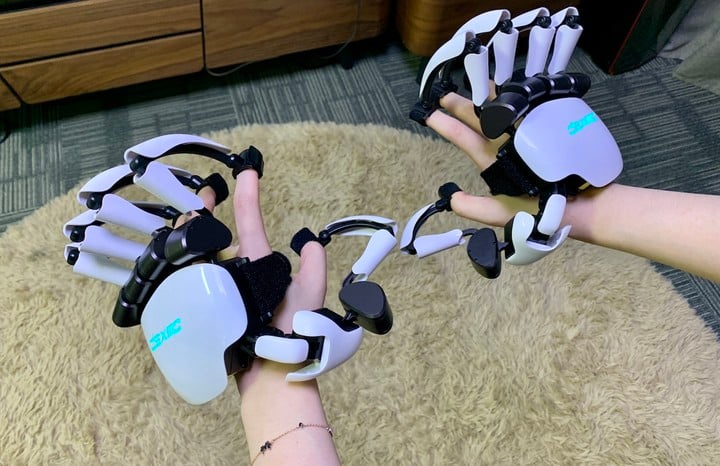
Although it is a glove, Dexmo is actually a mechanical exoskeleton robot designed for the hand.
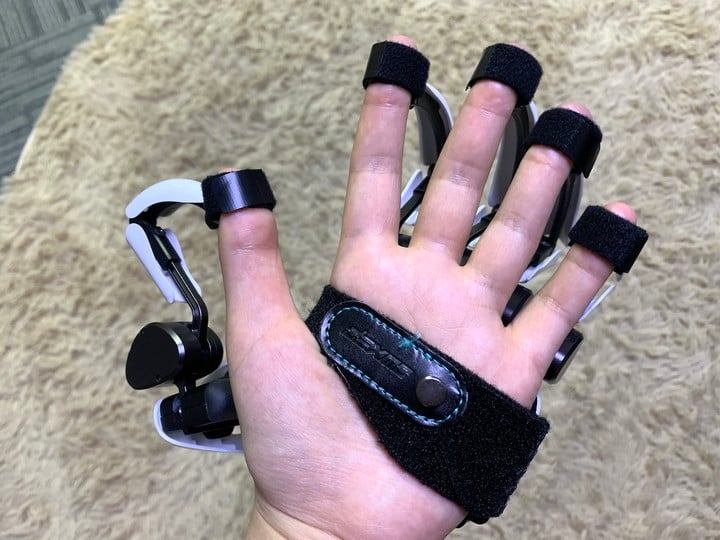
The device is attached to the palm of the hand by a strap wrapped around the palm of the hand. The exoskeleton of the five fingers is connected to the finger by a Velcro strap or a rubber finger cuff.
The mat that fits the back of the hand uses a custom tarpaulin and memory foam for non-slip and comfort.

After wearing Dexmo, the palm still has the flexibility to make a fist and open. Since each person’s palm size and finger length are different, the first time you use Dexmo, you need to record the palm data in several steps.
In the process of using Dexmo, the hand movements are collected by the gloves and used to reconstruct the accurate hand model in the virtual space, and then map the real hand movements in the virtual world.
This is how Dexmo works.
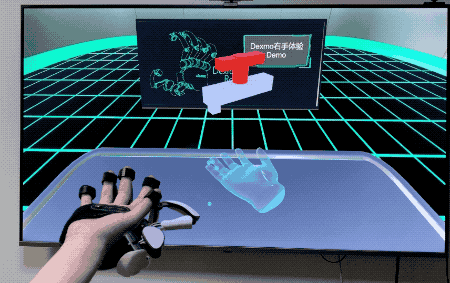
In the scene of experiencing a simulated water drop impact on the palm of the hand, we put on the glove, first “unscrew the faucet” to feel the shape of the knob, then the palm facing upNaturally open, after the faucet in the virtual world opens, the screen shows water droplets on the finger.
At the same time, Dexmo in the real world pulls your fingers and simulates the touch of water droplets onto your fingers.
The flow of water in the virtual space becomes larger, and the touch experienced by the fingers is also enhanced.
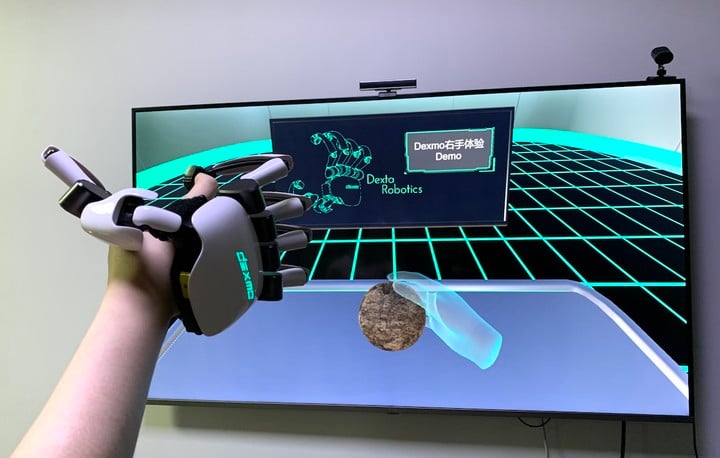
Dexmo not only simulates the grip, but also the size, shape, and hardness of virtual objects. We tried to “hold” different types of objects such as circles and squares.
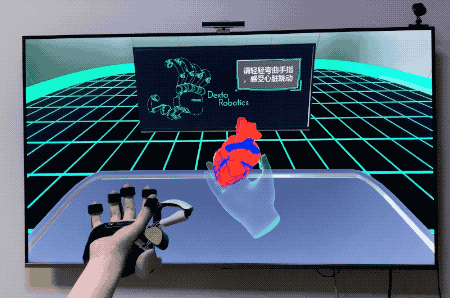
Improve the heart of the hand-held beating, allowing you to experience the feeling of being a surgeon (or Hanni Dial).
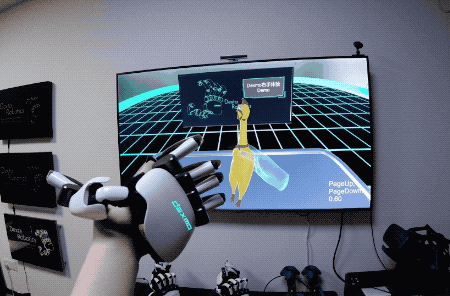
Impressively, in the virtual experience of squeezing the rubber screaming chicken, we found that in the real world, it is clearly “squeezing the air”, but the fingertips can clearly understand a kind of “squeezing soft rubber”. Touch.
This is the “flexible feedback” in force feedback. In terms of the working principle of the glove, when I was “squeezing the rubber screaming chicken”, Dexmo not only needs to stop my hand at a certain position, but also needs to let the motor output elastic force feedback on this basis.
Dexta’s founder, Gu Yuchi, told us that Dexmo is the only one of its kind to offer flexible feedback, so it can simulate the “touch flexible object” experience for users.
In other words, Dexmo gloves can also simulate the touch of the skin to some extent.
Dexta has developed corresponding modules according to different scenarios. For example, piano keys and electric drill buttons have different touches and different modules. When building a similar scene in the virtual world, you can call these modules directly.
Dexmo also comes complete with easy-to-use SDK development support for all major VR / MR head-mounted displays and positioning systems. After configuration, the display of the position and posture of the hand model can be completed. The SDK also presets independent interactive modules such as buttons, knobs, and levers.
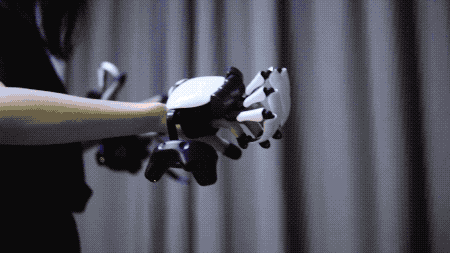
So wearing VR headlights and Dexmo force feedback gloves, we can experience realistic touch in the virtual world of simulation, complete the fine movements in various scenes, and even implement touch screen scenes in the virtual world.
It can be said that Dexta gives the virtual world a simpler, more realistic interaction.
A force feedback glove that can be mass produced
The development of virtual reality and augmented reality technology still confuses our senses through sound and video.
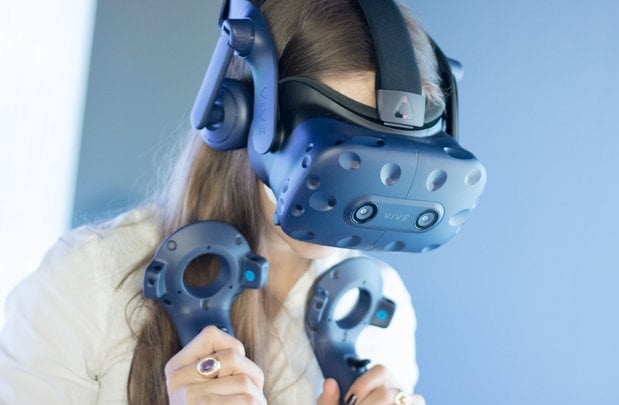
▲ vive headlight
At present, most of the peripherals of mainstream VR and MR devices are handles, which not only has a high learning cost, but also does not match the real-world interaction.
Touch is the next key to making VR and MR more realistic and immersive.
However, the existing tactile interactions are mostly achieved by relying on single-point vibration feedback, which is not real enough to touch the activity of the fingers.
In recent years, there have been many tactile interaction products that we can see from game makers to startups and laboratories.
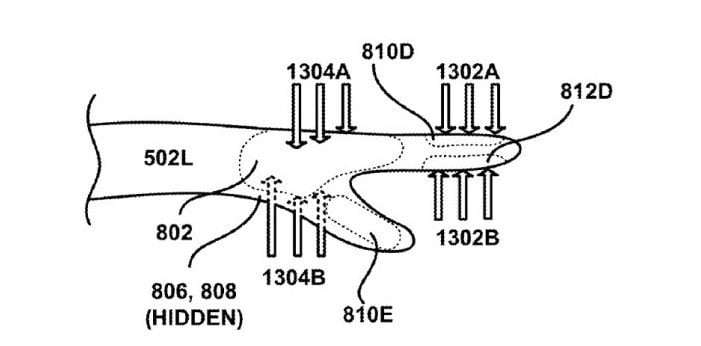
▲ A patent released by Sony this year
In 1997, Sony introduced the handle with vibration function for the PlayStation, which is the first application of force feedback to the game peripherals. In May of this year, Sony announced the patent for the latest “Tactile Force Feedback Glove”.
The tactile interaction products we see are basically provided by the vibration motor, compressed gas, hot and cold components and other materials to provide a sense of touch. However, most of them are not force feedback gloves.
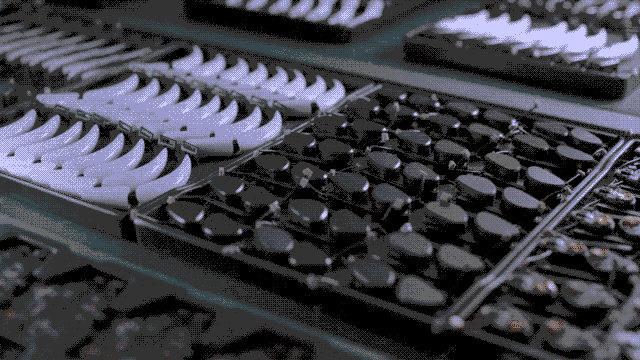
▲ FigureFrom: Dexta Robotics
Dexmo force feedback gloves provide a rich and detailed tactile interaction through a combination of software and hardware, but more importantly: It is ready for mass production.
Dexmo force feedback gloves combined with VR equipment can be applied in different areas such as game entertainment, education and research, medical rehabilitation, and industry training.
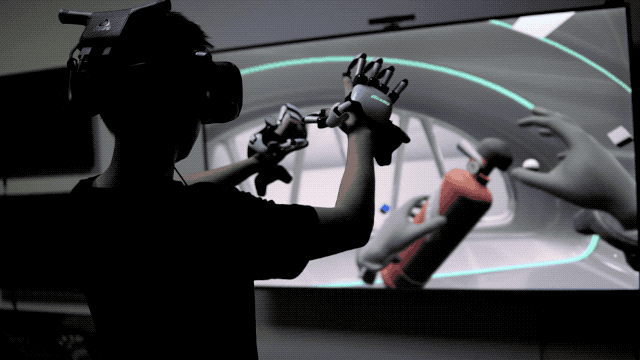
▲ Image from: Dexta Robotics
At present, Dexmo is primarily for enterprise users and is used for training scenarios. This glove is slowly appearing in new energy battery maintenance training, production line assembly training, aviation cockpit training simulation, nuclear power plant high-risk scene training and other scenarios.
The training of aircraft door training mentioned at the beginning of the article is a small demo of Dexta’s current crew training program in cooperation with a domestic airline.
In the scene of factory production lines and high-risk operations, the traditional training methods are nothing more than reading paper materials, training videos, or classroom teaching. However, these paper-based training methods are inefficient and difficult to evaluate real training. effect.
Training with VR and MR has been the choice of many companies, allowing employees to train in simulation scenarios, which not only improves training efficiency, saves costs, but also reduces production accidents from the source.
The next generation interactive interface of VR / MR
Some readers may ask questions, why not make full-covering gloves?
Dexta’s answer is: This is a plan that we abandoned in 2016. One of theThe reason is that the full-coverage gloves can’t be compatible with different people’s hands, and the experience of long-term use is not good.
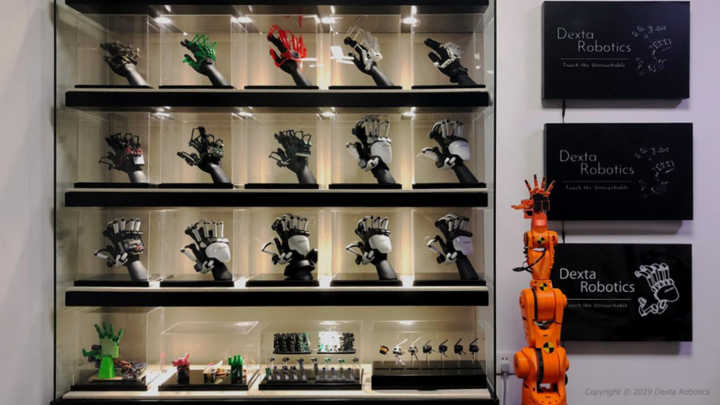
▲ Image from: Dexta Robotics
In Dexta’s office in Shenzhen, we saw Dexmo force feedback gloves from generation to generation. Dexta has been developing design force feedback gloves since 2014 and released its first generation in 2016. Early gloves weighed even 400 grams.
Dexta said that in the process of iterative force feedback gloves, the running-in of the motor system and the supply chain system is a big problem.
One of the key components in the glove is the steering gear. They used to live in the factory for eight months in the process of improving the details of the steering gear. Finally, the factory was produced according to their design and needs. The product.
Therefore, the force feedback module (motor) on this glove, as well as the device-based hand interaction physics engine (ie software), and the supply chain system and production capacity built by Dexta became the start-up robot. The company’s current product barriers.
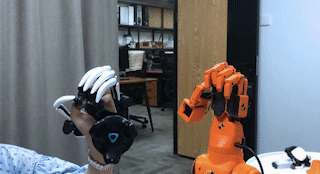
▲ Image from: Dexta Robotics
Dexta is now positioned to design and manufacture interactive systems. Its founder, Gu Yuchi, believes that the force feedback gloves they developed are equivalent to smart phone touch screens for VR and MR systems.
The capacitive touch-touch technology that originated on the iPhone allows illiterate kids to use their smartphones just before they get started. Nowadays, the VR and MR systems are just like the iPhone smartphones before the iPhone, they can be used, but not good. use. And Dexmo force feedback gloves allow users to naturally use their hands in VR and MR scenes to enhance immersion.
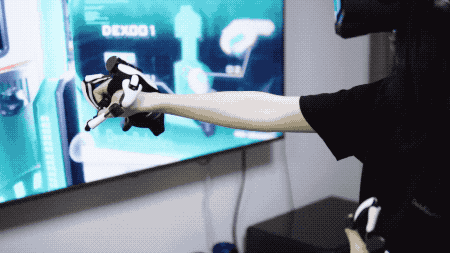
In general, VR was pushed to the forefront in 2014. After experiencing capital chasing and bubble bursting, it has gradually returned to technology itself, and capital is relatively calm and rational. For now, the hardware problems of VR products such as bulky headlines, annoying wires, insufficient resolution and weak GPU rendering are still to be resolved.
This Dexmo force feedback glove is a rare VR and MR related product that has surprised us in the past two years. It is not only wireless, lightweight, but also a new interactive system that can be mass-produced. VR, MR have a new user experience technology products.